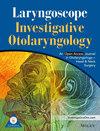Prognostic Factors and Clinical Characteristics in Pediatric Sudden Sensorineural Hearing Loss: A Retrospective Analysis
Abstract
Objective
To investigate the clinical characteristics and prognostic factors influencing treatment outcomes in pediatric sudden sensorineural hearing loss (PSSNHL).
Methods
A retrospective analysis was conducted on 63 children (64 ears) diagnosed with PSSNHL from January 2013 to December 2023. All patients received either systemic or intra-tympanic steroid therapy. Data on age, tinnitus presence, audiogram types, and initial hearing thresholds were analyzed using SPSS 25.0. Univariate and multivariate logistic regressions were performed to identify significant prognostic factors.
Results
The mean age was 16 years (interquartile range:14–17 years). Median time from symptom onset to treatment was 7 days (interquartile range: 4–13 days). Tinnitus was present in 85.7% of cases. Post-treatment hearing thresholds improved from 84.52 ± 3.29 dB HL to 64.17 ± 4.48 dB HL (p < 0.001). The overall therapeutic efficacy rate was 48.4%. Multivariate analysis identified time from onset to treatment (OR = 0.923; 95% CI: 0.789–0.997; p < 0.01) and initial hearing threshold (OR = 0.939; 95% CI: 0.869–0.981; p < 0.05) as independent prognostic factors.
Conclusions
Early intervention and lower initial hearing thresholds are associated with a better prognosis in PSSNHL. Prompt treatment significantly improves outcomes, highlighting the importance of early diagnosis and intervention.
Level of Evidence
Level 4.

 求助内容:
求助内容: 应助结果提醒方式:
应助结果提醒方式:


